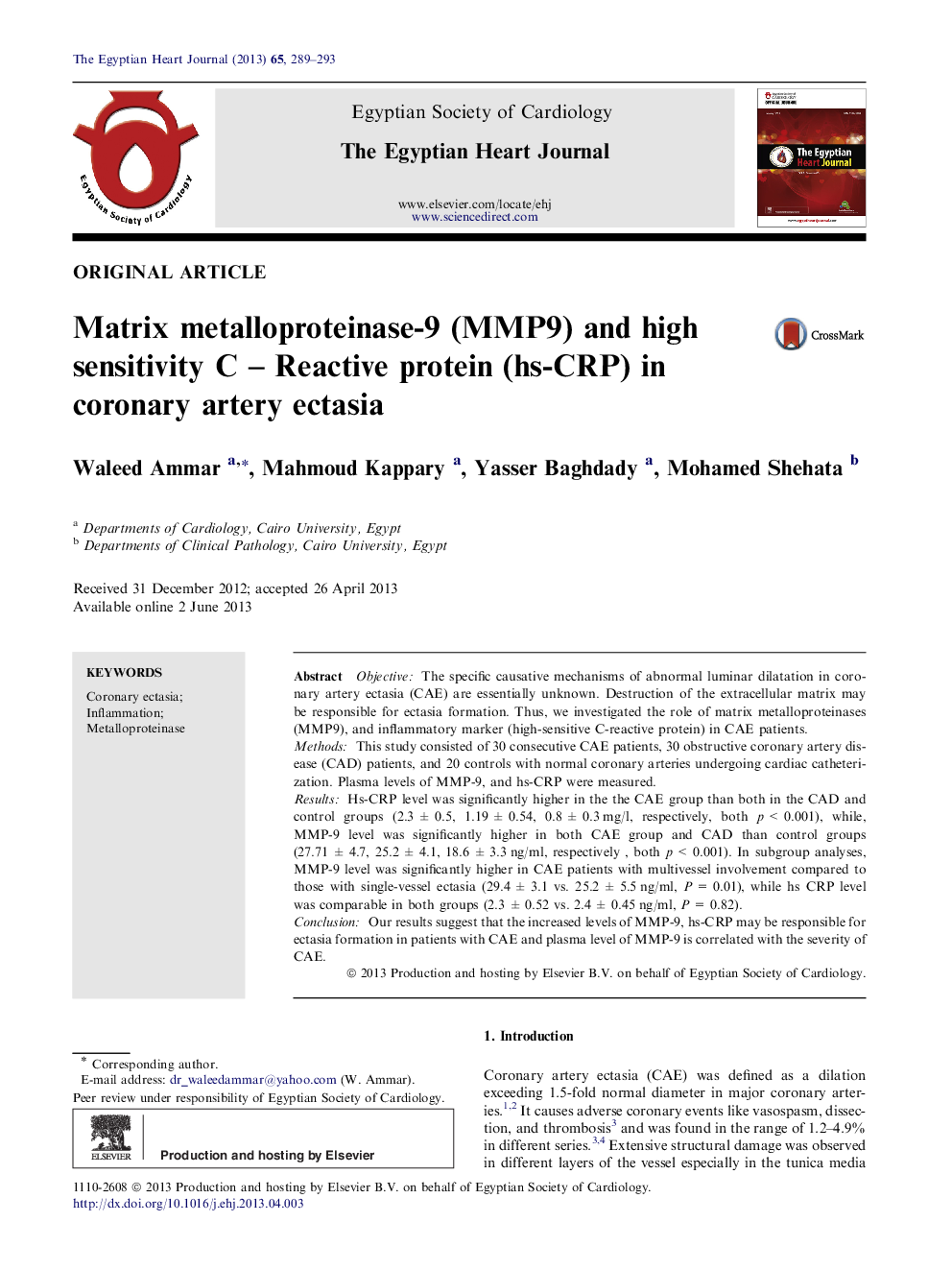| Article ID | Journal | Published Year | Pages | File Type |
|---|---|---|---|---|
| 2910770 | The Egyptian Heart Journal | 2013 | 5 Pages |
ObjectiveThe specific causative mechanisms of abnormal luminar dilatation in coronary artery ectasia (CAE) are essentially unknown. Destruction of the extracellular matrix may be responsible for ectasia formation. Thus, we investigated the role of matrix metalloproteinases (MMP9), and inflammatory marker (high-sensitive C-reactive protein) in CAE patients.MethodsThis study consisted of 30 consecutive CAE patients, 30 obstructive coronary artery disease (CAD) patients, and 20 controls with normal coronary arteries undergoing cardiac catheterization. Plasma levels of MMP-9, and hs-CRP were measured.ResultsHs-CRP level was significantly higher in the the CAE group than both in the CAD and control groups (2.3 ± 0.5, 1.19 ± 0.54, 0.8 ± 0.3 mg/l, respectively, both p < 0.001), while, MMP-9 level was significantly higher in both CAE group and CAD than control groups (27.71 ± 4.7, 25.2 ± 4.1, 18.6 ± 3.3 ng/ml, respectively , both p < 0.001). In subgroup analyses, MMP-9 level was significantly higher in CAE patients with multivessel involvement compared to those with single-vessel ectasia (29.4 ± 3.1 vs. 25.2 ± 5.5 ng/ml, P = 0.01), while hs CRP level was comparable in both groups (2.3 ± 0.52 vs. 2.4 ± 0.45 ng/ml, P = 0.82).ConclusionOur results suggest that the increased levels of MMP-9, hs-CRP may be responsible for ectasia formation in patients with CAE and plasma level of MMP-9 is correlated with the severity of CAE.
